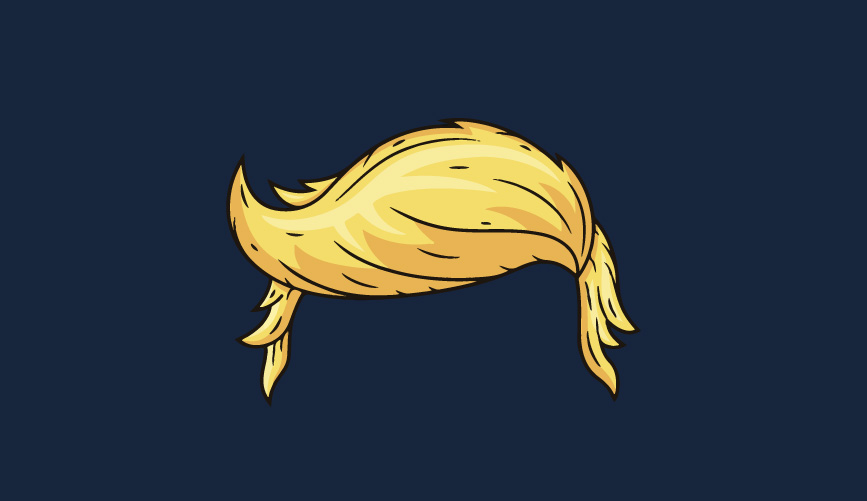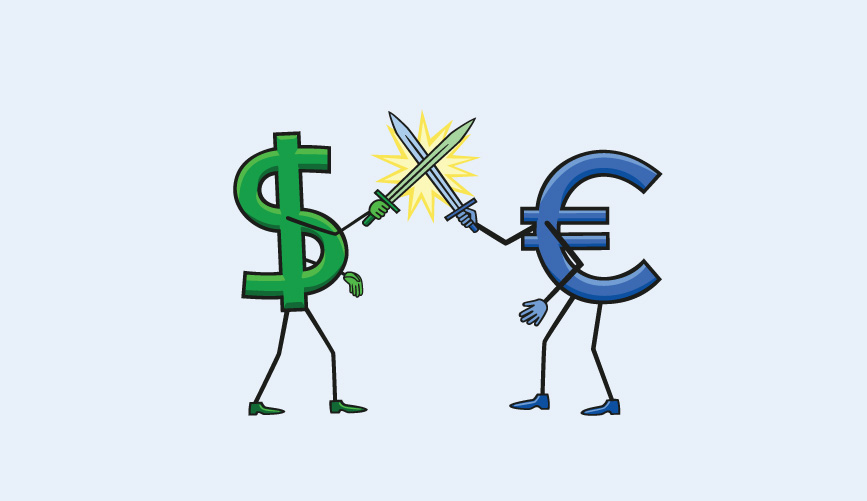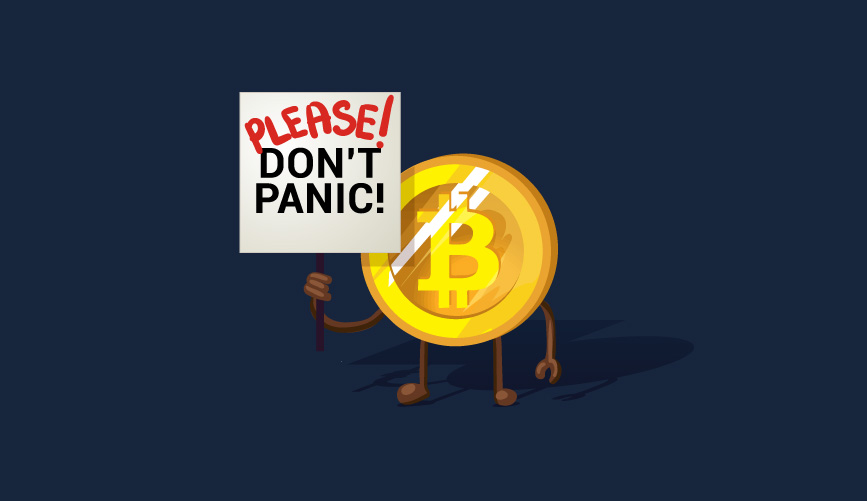Unpredictable Predictions 2019 by FBS
Everyone wants to know what to expect in the New Year. Traders are not an exclusion.
This time we created something new and interesting for you. We think that it’s boring to talk about things you can expect yourself. That’s why we gathered events that no one expects but they can happen in 2019 and turn markets upside down.
Donald Trump - perhaps the most interesting POTUS!
Mr. Trump can be called the most charismatic, unpredictable, shocking person of 2018. Trade wars, the crash of the oil market, sanctions, new NAFTA are all about the US president.
Ever since the day he took office, Trump sought to roll back the foreign policy held by Barack Obama. In addition to having a rigid attitude when it comes to foreign policy, Trump also implemented intriguing strategies in the sectors of technology, energy, and finance that are considered as a foundation of the US economy. Although Trump and his policy got criticism, the US economy made tremendous progress during his term as POTUS.
Trade wars were the most significant power play of Donald Trump that he put forward in 2018. Stating that the US was losing a great amount of money in the trade with China, Trump enacted a series of tariffs. Looking at the data on the US-China trade, we can say that Trump had a valid point. Although many experts predicted a decline in the US economy caused by tariffs, the actual figures appeared to be opposite. Moreover, the US dollar was regarded as a safe haven asset during the time of trade wars’ escalation.
We suppose that Mr. Trump will continue with similar noteworthy strategies in 2019. We could expect more stories on “Iran sanctions” and Middle East issues. An increasing the 2019 budget for the Pentagon is an important indicator that the risk of global crises may rise. If Trump keeps a steady course with his strategies, we may have a year where the risk appetite will be low. It will lead to big losses in all risky assets. As the demand for safe commodities will grow, we can see a sharp surge in gold prices.

Is the parity for the EUR/USD pair possible?
2018 was characterized by increasing interest rates in the United States. Since the mid-year, the US dollar has become a profitable currency for the carry trade because of uncertainties in other countries and their weak interest rates.
However, the situation may differ in 2019. Despite the Fed is anticipated to raise the interest rate to 3.50% in 2019-2020, the American economy may slow down in the midst of a global deceleration environment. It will negatively affect the national debt. As a result, the US will need cheaper money to be able to repay its debt. Such a return in the monetary policy will cause a slide of the US dollar.
Another important factor we should take into consideration is political uncertainties. Donald Trump may face a possible impeachment, giving an extra push to large traders to increase their short positions for the US dollar.
On the other hand, at the end of 2018, the European central bank finally tapered its quantitative easing policy. As a result, in 2019, the ECB is supposed to increase interest rates for the first time in many years giving support to the euro. There are odds that the EUR will be set as the main payment currency in its trades with the rest of the world.
Taking into consideration all the factors above, we can say that the EUR/USD could be far from parity in 2019. If all events above are met, the euro will take revenge on the USD pushing the pair to 1.30.

Financial market instability will boost the gold market to $1480/ounce in the Q3 2019
The US economy has been developing in 2018. In the second quarter of 2018, the US GDP growth reached 4.2% that is the highest level since the third quarter of 2014. The unemployment rate reached the lowest level in nearly 50 years, while the number of jobs in October rose by 250,000 and the average wage increased by 3.1%, the highest rise in nearly 10 years.
However, the economic growth in 2019 might be not as bright as it used to be in 2018. It seems like the policy of Mr. Trump is highly effective but he might risk a quick victory without paying attention to the long-term and big price of its policy. The current policy may destabilize the global financial system. In 2018, the world financial market was chaotic and this is just the beginning of the whole damage. In the end, it can also speed up the deterioration of the dollar power.
What about the Fed?
The strong US economy let the Federal Reserve raise the interest rate 4 times in 2018. However, we all know that Mr. Trump is unsatisfied with the current Fed’s monetary policy. There are risks that if the Federal Reserve keeps its pace unchanged, the Chairman will be fired. However, not only Mr. President puts pressure on the monetary policy. There are talks about more caution rate lifting have appeared among FOMC members. However, no matter either the Fed tightens its pace or the chairman will be fired, it will hurt the USD.
Will the weak USD boost the gold market?
The rising dollar was one of the reasons for the gold’s decline in 2018. However, there are many reasons to say that the USD will lose its positions in 2019. Moreover, gold managed to play a role of the safe haven asset in 2018. As we said before, during the 2019-2020 period the global financial market will suffer a lot because trade wars will heat up. The riskier the world is the better conditions for the gold market are. As a result, the XAU/USD pair can reach $1480/ounce in the third quarter of 2019.

The only hope for the crypto.
We guess, the questions “Will Bitcoin recover during the next year” or “Will Bitcoin reach $2,000” are the most popular ones among the crypto community. Let’s shed some light on the future of cryptocurrencies in 2019.
The oldest cryptocurrency has suffered huge losses during 2018, falling from the January’s highs at $17,200 to December’s lows at $3,200. Among many reasons for this bearish market, analysts name the fear of high taxes on digital assets. After Donald Trump signed the tax plan which made all of the crypto assets taxable, investors lost confidence in their holdings and that resulted in a crypto sell-off.
A new trick of Mr. Trump?
Ironically, major banks see Trump’s actions as the main factor which will push the price for Bitcoin higher at the beginning of 2019. After facing with the possible impeachment (yes, it can be possible), Trump might try to get the public sympathy back by the announcement of the crypto tax cuts. According to analysts, he has been holding this ace in the hole for quite a while after investing in Bitcoin back in 2017. He will plan crypto and blockchain to make the perfect base for the trade relationships between the US and other countries. That is why the price for Bitcoin is expected to rise towards the $10,000 level in February-April of 2019.
However, that happiness might not last for a long time. According to the recent news, Iran, which is one of the countries accepting crypto, plans to use cryptocurrencies to avoid the US sanctions since June 2019. They will follow the approach of Venezuela and create their own currency backed by the crude’s price. Iran will use it instead of the US dollar to conduct the operations with oil. If Iran makes it possible, it will disappoint the US president in crypto assets. His further comments and actions will probably pull the price of Bitcoin back to the levels near $6,000.

What if the RBA eases its monetary policy even more?
The Reserve Bank of Australia has been keeping the interest rate on hold since August 2016. Moreover, it wasn’t a rate hike since November 2010.
The central bank doesn’t change the interest rate mentioning a positive effect of the weak AUD on economic data.
What does the market expect?
Although the RBA keeps claiming uncertainties and a continuation of the easing monetary policy, the market still hopes for a rate hike in 2019. And even if the rate hike doesn’t happen in 2019, 2020 should bring an increase.
But what if the central bank turns more pessimistic and cuts the interest rate?
It may happen for 4 reasons.
The first reason is the weak economic data. Despite the central bank says that the low rate of the Australian dollar supports the rise of the economy, actual figures don’t confirm that. Falling house prices, weak inflation, and a bigger decline in the Australian economy are crucial factors to cut the interest rate.
The second reason is a possible escalation of trade wars. The trade war between the US and China is highly negative for the Australian dollar because China is the major trade partner of Australia. As a result, the cautious tone of the central bank may prevail.
The third reason is hidden in risks of the global economic turmoil. Therefore, the fall of risk appetite may become even bigger than in 2018. Global economic instability and a plunge of the AUD may let the Reserve Bank ease its policy even more.
The last but not least reason is the Fed monetary policy. The Federal Reserve significantly increased the interest rate in 2018. However, there are risks that this pace will slow down in 2019. As a result, the difference between interest rates will stop increasing, letting the RBA hold its loose monetary policy.
Moreover, as the central bank has been keeping the interest rate unchanged for more than 2.5 years, it won’t be a big surprise if the rate cut happens.
What fall can we expect?
The Australian dollar/US dollar pair started recovering in October 2018. In the case of the rate cut, the recovery will be stopped. If that case a fall to 0.6345 will be highly possible.

What if the UK and EU fail to agree on the Brexit deal on March 29, 2019
During 2018 the British pound was under the highest pressure from the Brexit negotiations it has ever suffered and it’s not surprising because the deadline for the negotiation is scheduled on March 29, 2019. Time flies but the agreement is moving away.
The final Parliament vote for the Brexit deal was planned for December 11, however, Theresa May canceled it. Why? Because the PM knew that the deal would be rejected. As a result, May returned to negotiations with the EU.
The worst scenarios for the UK.
The first scenario is the second referendum. Although Mrs. May doesn’t consider a possibility of the second referendum, it might happen. The second referendum will bring more uncertainties to markets and chaos in the UK government. Moreover, the results of the referendum will be unpredictable. If there is a decision that the UK still should leave the EU, the country comes back to where it was. If people vote for staying in the EU, the British government will fall.
The second scenario is related to the first one. The UK may decide to stay in the EU without the referendum. Do you think that it will support the GBP? Hardly. The British economy and the pound have been suffering a lot because of the Brexit deal. If in the end, the country doesn’t get the deal, it will be a crash of the UK government that will negatively affect the British currency.
The third and worst scenario is “no deal”. The UK has been fighting for the Brexit since June 2016. If the country fails to agree on any deal with the EU, it will be a further collapse for the British pound that will continue until there are any certainties in a relationship between parties.
Making a conclusion, we can say that if the UK and EU can’t come to an agreement, the British government, economy, and pound will crash.

2019 will be a challenging year for oil
The volatile commodity is of great interest to traders. Let’s review the past and outline the prospects for the future providing you with an edge on the oil market.
The story of 2018
Price levels of 2014 above $100 a barrel remain an unaffordable luxury for oil. In 2018, Brent only managed to approach $90. Crude prices were growing until the end of September. The market was supported by production cuts of the Organization of the Petroleum Exporting Countries (OPEC for short) and its allies as well as by US sanctions on Iran. Provocative tweets from President Donald Trump led to occasional chaotic price swings. Then the factors which pushed oil upward turned out to be false and its price collapsed losing a third of its value.
The year ahead
Although the oil will rebalance after OPEC announced new output limits starting from January, this support looks fragile. The deal made by the oil exporters will be reviewed in April. The US will reconsider the exemptions it granted to eight countries to continue importing Iranian oil at around the same time. Donald Trump has clearly expressed the desire to keep oil prices low and $80 for Brent and $70 for WTI look like a ceiling for him. America itself is pumping a lot of oil and will likely produce even more in 2019. At the same time, the solid demand enjoyed by oil during the last couple of years may diminish given the global economic slowdown. The resulting oversupply is to keep crude prices under negative pressure, though the fall in prices will be smoothed by the fact that demand will rise as the price goes down. All in all, $70-$50 a barrel is the price range of Brent crude oil we project for 2019.
The worst-case scenario: OPEC falls apart
Survival of the fittest is deemed the key principle of the natural selection. It’s evident that the
OPEC has either to evolve or die. Its countries are currently divided by competing national differences and political disputes. Saudi Arabia and Iran hate each other, and Qatar has already left. Unlike the United States and Russia, OPEC nations lack the competitive advantage of low-cost production. The trend is for the global economy’s reliance on OPEC oil to decline. As a result, the bloc will keep losing its market share and the ability to influence the prices. What can the demise of OPEC mean for the oil market? If centralized production cuts are out, it will pull the rug from under the crude’s price and lead to a 50% price crash.

P.S.: looking at these forecasts, don’t forget that we considered unpredictable events. The probability of them is not too high but if they happen, it will cause crucial changes in markets.